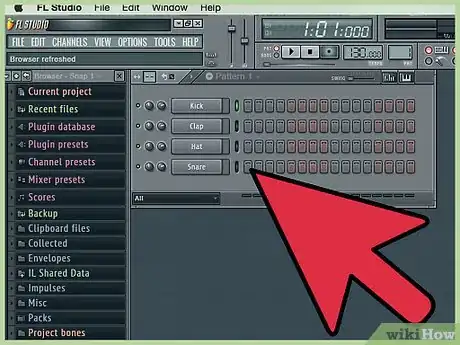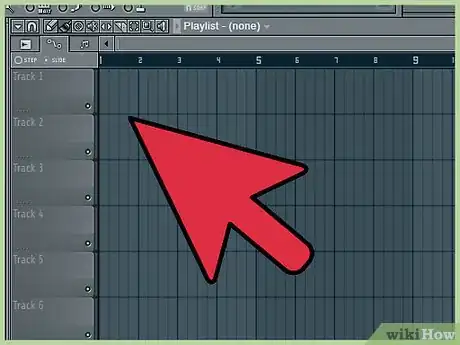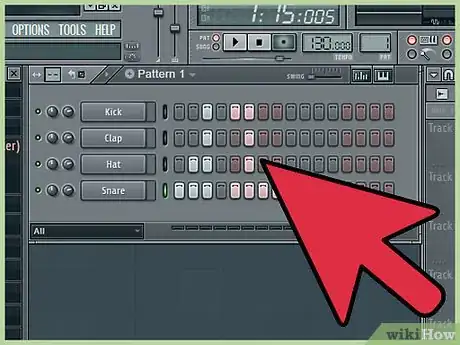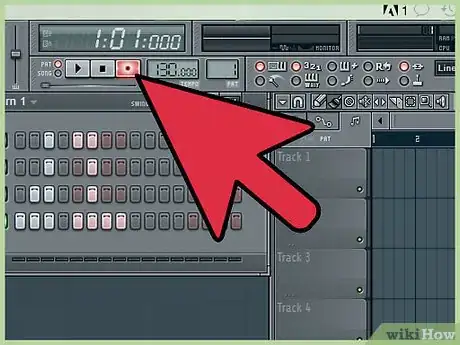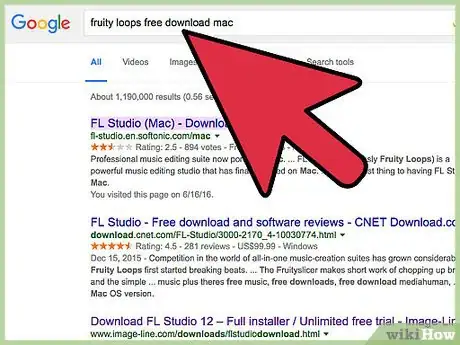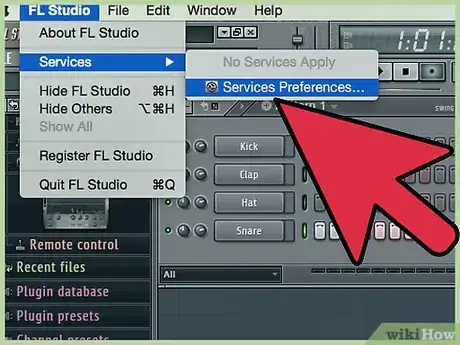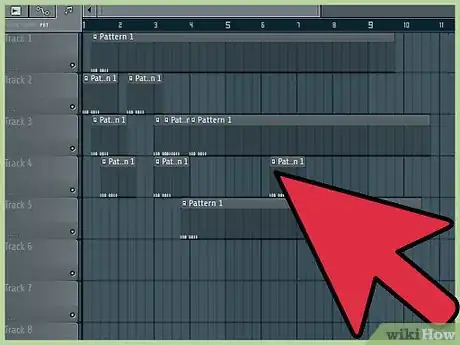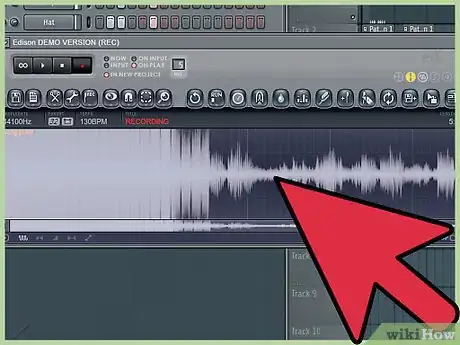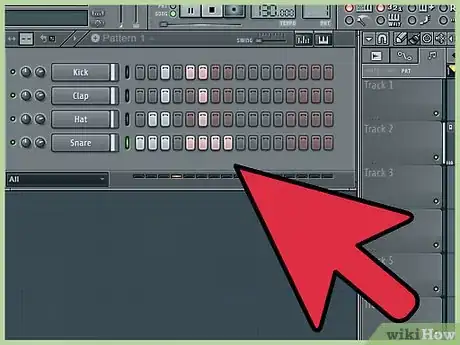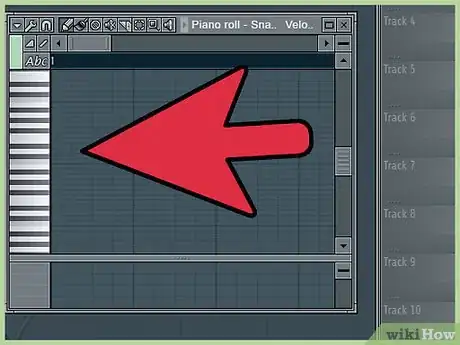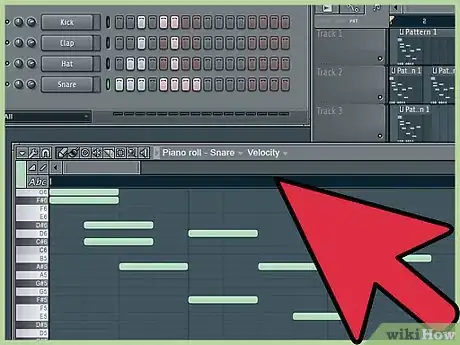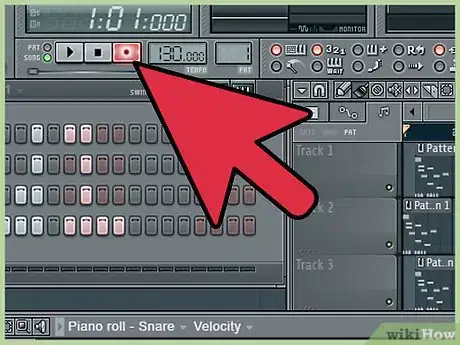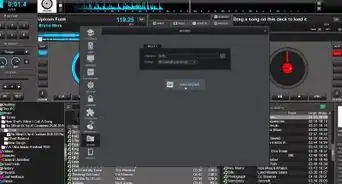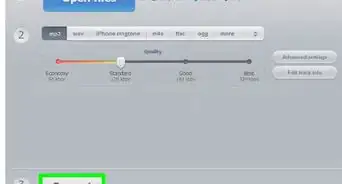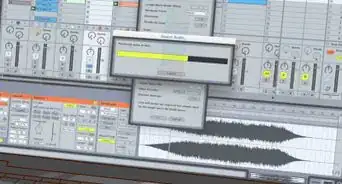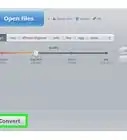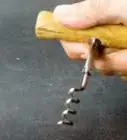X
This article was co-authored by wikiHow Staff. Our trained team of editors and researchers validate articles for accuracy and comprehensiveness. wikiHow's Content Management Team carefully monitors the work from our editorial staff to ensure that each article is backed by trusted research and meets our high quality standards.
This article has been viewed 69,191 times.
Learn more...
Rhythm and Blues is an old genre that has evolved into a mainstream pop genre. In the 1980s R&B started to be more influenced by hip hop. Hip hop relies heavily on arranging samples to a catchy beat. Contemporary R&B does this, but instead of rapping, R&B artists sing. There are different avenues you can take when composing a R&B beat.
Steps
Method 1
Method 1 of 3:
Using a Computer to Make Beats
-
1Research and download a software. There are tons of different softwares available to write music and beats. Before you download something, take some time to research softwares. Some things to consider is the price of the software, operating system of your computer, quality of beats you want, and ease of the software.
- Ask fellow beat producers what software they prefer. You could also reach out, via email, to some of your favorite music producers. You never know until you ask.
- One of the easiest softwares that has become an industry standard is Fruity Loops. The reason why several artists start with Fruity Loops is because the software is free and easy to use. It is a good idea to download something free to get a basic feeling for composing beats.
- Another industry standard is Ableton Live and Reason. You can get a feeling for these softwares by downloading a free trial of the program. This way you can decide if the software is the right fit for you.
-
2Experiment with beats. The best way to start with the software is to practice making drum loops. All softwares set up drum loops differently, but they usually use the same layout. Open a drum kit on the software and access the piano roll. The piano roll is where you can arrange different parts of the drum kit like bass, snare, hi hat, etc. Set the piano roll to loop so the beat repeats itself.
- Play around with different parts of the drum kit until you find a beat that you like.[1]
- An easy way to build a beat is by beginning with the bass drum.
Advertisement -
3Play with a bass line. Sort through the different bass sounds on the software. Bass is integral to R&B music. The music software should have plenty of synthesizer bass sounds. Pick one out and practice playing a line over the beat. You can opt for a simple beat similar to the way Wu-Tang uses bass lines, or compose something more complex.
- Once you find a fun melody, record and loop the bass line to match the drum beat.
- Simple bass lines tend to be the most catchy for an R&B song.
- Use the piano roll to arrange the notes of the bass line like you did for the beat.
-
4Add supporting parts. Once the rhythm section of the beat is in motion, it’s time to add additional melodies and chords. Find a good keyboard sound and experiment with layering chords over the rhythm. You don’t need to be an expert at piano to find some chord shapes that sounds decent over the rhythm.
- Try playing a variation of a major 7th chord in the key of the bass. You can find the key easily by matching the notes of the chord with the notes from the bass' piano roll
- Look through the lead synthesizers and pick out tones that matches the sound of the beat. Try improvising a solo over the looped parts.
- You can also experiment with supporting percussion parts such as adding a bell, hand drums, or a tambourine.
-
5Record a song. Recording in a music software is different depending on what software you use. You should have a few variations of the same beat and bassline before recording the track. Mess around with playing one beat, pausing the beat, and then playing a new beat with a new bass line.
- Some softwares live Ableton Live, have two different modes: live mode and recording mode. It is easier to build the supporting parts of the beat in the live mode. Once you have a few variations of each part, switch over to the record setting to try recording the beat.
- You can’t create a good beat without trying and failing a R&B beat. Every musician creates something corny before recording something good.
Advertisement
Method 2
Method 2 of 3:
Making R&B Beats with a Sampler
-
1Research and purchase a sampler or drum machine. There are dozens of samplers that can produce high quality beats without a computer. Some artists prefer to leave the computer out of their work flow. There are two basic categories that sometimes get mixed together: samplers and sequencers. You’ll need to purchase one of these if you don’t want to solely use your computer. Check out a music store before purchasing equipment.
- Samplers are good for taking samples, for example, a clip of a song, a guitar riff, monks chanting, or just a snare hit.
- Sequencers are good for adjusting the beat live and are set up the similar to a piano roll on a computer.
- Try to go into the store to test the product out before making a purchase. There is a lot of competition for these types of products, so you should be able to find one that fits your needs.[2]
-
2Program settings on your device. Once you get your machine, you should play with it! Experiment and learn some of the device’s functions by using the presets. Presets will teach you about the functions and capabilities of the device.
- Once you find a preset you like, modify individual parts of the preset to create a new sound.
- Upload different sounds to your device to create unique sounds.
- If your device can store samples, try uploading loops of older songs. It is popular for R&B to sample 1960s and 1970s era soul and funk.
-
3Program the device for a full song. Once you've built a few loops and supporting parts for the beat, you can attempt to program a full track. Sequence a channel to have 16 bars for the verse and 8 bars for the chorus. A bar is a small amount of time, typically containing a full measure of the beat.[3] You could also include a bridge, intro, and outro to add complexities to your track.[4]
- The 16 bars is merely a starting place. You can add more or less to your liking.
-
4Practice a beat live. Once you get the feeling for the device, try performing your as though you had a crowd. You don’t need to showcase your music to anyone before you're ready. Start the beat simple and gradually add different parts to create a textured R&B track.
- Plug the device into a keyboard amp or a P.A. for the best sound.
- You could also record a demo of your beat or live set using a field recorder.
-
5Invite a singer or rapper to collaborate. Once you become comfortable using your device, play with fellow artists. You’ll feel a greater sense of pressure when performing with another artist. Work out a song by planning different parts of the song using a pen and paper. Agree to do one thing during the verse, and then do something different during the chorus.
- Write down the setting you’re using on the machine so you’ll remember what you are playing.
Advertisement
Method 3
Method 3 of 3:
Recording Live R&B Beats
-
1Know what you need. R&B beats require smooth instruments. These include pianos, guitars, harps, violins, etc. You also have harder sounds like trumpets and lead synths that can be used to add emphasis to a part. Synthesizers are being used for R&B beats more than other instruments.
- Having access to a studio with multiple instruments will benefit you best for creating a beat live.
- Recruit musicians to help you write and record beats live.
-
2Understand your keyboard. A lot of music in R&B is made using a keyboard. Keyboard is a good way to compose different parts of the song. If you want to create a demo for other musicians to play to, record all the parts you’re imagining in your head.
- Keyboards have all the octaves that you could need for a song.
- Midi keyboards allow you to play software instruments on the keys. For example, you can play an accordion through your midi keys.
-
3Get a feeling for the drums. Make sure your drums are fit for the type of track you are making. For slower tracks use a combination of the ride, soft snare, and auxiliary percussion like a shaker or tambourine. For quicker beats go for a more pop feel with heavier snare, kick,, crash, and toms.
- Most R&B music has a smooth beat that is held together by the drums and bass.
- Listen to multiple styles of R&B to get a better understanding for R&B drums. Listen to The Ohio Players, Funkadelic, and any era of James Brown.
-
4Understand chords and basic melodies. A lot of beats are made starting with a simple melody, like a bass line or a catchy lead line. The beat comes into fruition by adding harmony with other instruments like the keyboard, guitar, or a woodwind instrument. If you are playing with several musicians, communicate when something sounds good.
- Popular chords for R&B are major 7th chords. Experiment with an arrangement with major 7th chords, and see if it works. If you have a composition with major chords, add the 7th to add a smoother sound to the arrangement.
- Once the beat and melody come into place, be sparse with additional parts.
- Subtly is an underrated trait in music that will sound good.[5]
-
5Record the track. After everyone agrees on their parts of the song to play, you’re ready to record the track. You can either record the song yourself, or go into a recording studio. It is rare for contemporary R&B to be played on live instruments, but that doesn’t mean it won’t sound good. Consider recording a few demos from home before going out and recording at a studio.
- Plenty of softwares that can make beats also have recording capabilities built into them. This is a good way to incorporate a live bass player into a mostly electronic beat. To record on a software you'll need an interface and a microphone.[6]
- If you decide to go to a studio, be sure you can play your songs flawlessly. It is important to be on top of your sound before recording with a producer.
- Another popular way to make a demo is by using a four track recorder. Four track recorders can be limiting, but oftentimes the limitations of a four track can benefit the songwriting process.
Advertisement
Community Q&A
-
QuestionHow can I get the software to start making my beats?
 Community AnswerThere are many software options that you could use; however, for the type of beats that you are after, consider FL Studio 12.
Community AnswerThere are many software options that you could use; however, for the type of beats that you are after, consider FL Studio 12.
Advertisement
Warnings
- Do not overpower the artist with unnecessary instruments!⧼thumbs_response⧽
Advertisement
References
- ↑ https://www.image-line.com/support/FLHelp/html/basics_workflow.htm
- ↑ http://www.bhphotovideo.com/explora/audio/buying-guide/drum-machines-brief-history
- ↑ http://www.howmusicworks.org/504/Meter-and-Rhythm/BarMeasure-Divisions
- ↑ http://www.mpc2000xl.com/mpc_timing.htm
- ↑ http://www.dummies.com/how-to/content/home-recording-studio-types-live.html
- ↑ http://blog.discmakers.com/2012/04/how-to-record-bass-guitar/
About This Article
Advertisement

